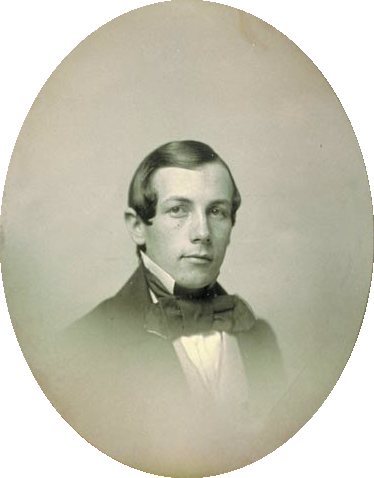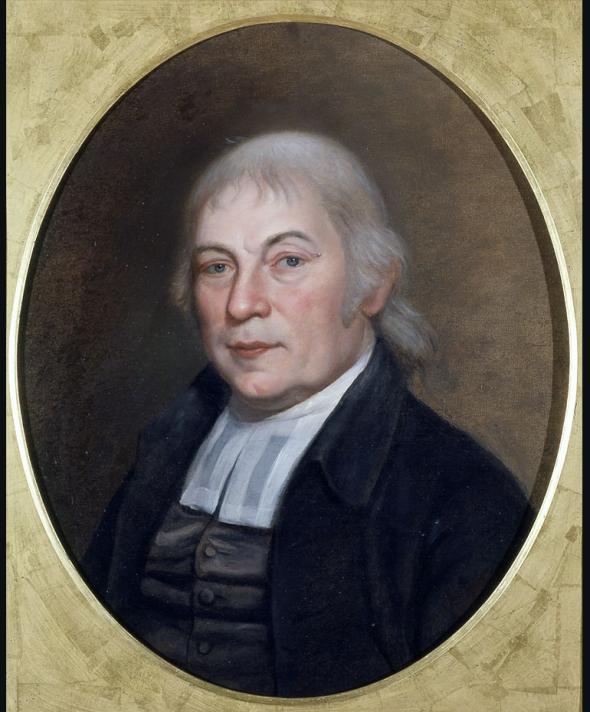|
Gillenia Stipulata
''Gillenia stipulata'', or American ipecac, is an herbacious perennial plant in the genus ''Gillenia'', in the family Rosaceae Rosaceae (), the rose family, is a medium-sized family of flowering plants that includes 4,828 known species in 91 genera. The name is derived from the type genus ''Rosa''. Among the most species-rich genera are '' Alchemilla'' (270), '' Sorbu ..., native to the United States from Texas to the west and south, New York to the North, and North Carolina to the east. The species grows in dry uplands and open woods, usually on acidic soils. It reaches a height of about and has white flowers with 5 very narrow petals spaced widely apart. References stipulata Flora of the Northeastern United States Flora of the Southeastern United States Flora of the Great Lakes region (North America) Flora of the United States Taxa named by Gotthilf Heinrich Ernst Muhlenberg Flora without expected TNC conservation status {{Amygdaloideae-stub ... [...More Info...] [...Related Items...] OR: [Wikipedia] [Google] [Baidu] |
Nathaniel Lord Britton
Nathaniel Lord Britton (January 15, 1859 – June 25, 1934) was an American botanist and taxonomist who co-founded the New York Botanical Garden in the Bronx, New York. Early life Britton was born in New Dorp in Staten Island, New York to Jasper Alexander Hamilton Britton and Harriet Lord Turner. His parents wanted him to study religion, but he was attracted to nature study at an early age. He was a graduate of the Columbia University School of Mines and afterwards taught geology and botany at Columbia University. He joined the Torrey Botanical Club soon after graduation and was a member his entire life. He married Elizabeth Gertrude Knight, a bryologist, on August 27, 1885. They had met when she joined the club and were lifelong collaborators in botanical research. New York Botanical Garden During their honeymoon in 1888, they visited Kew Gardens, which led to his wife proposing a botanical garden for New York at a Torrey Club meeting. Together, they campaigned to bring ... [...More Info...] [...Related Items...] OR: [Wikipedia] [Google] [Baidu] |
Addison Brown
Addison C. Brown (February 21, 1830 – April 9, 1913) was a United States district judge of the United States District Court for the Southern District of New York, a botanist, and a serious amateur astronomer. Early life, education and career Addison Brown was born on February 21, 1830, in West Newbury, Massachusetts, the oldest of five children of Addison Brown Sr., a shoemaker, and Catherine Babson Griffin, both descended from Massachusetts' earliest Pilgrim settlers. He attended West Newbury's one-room school until he had exhausted its offerings at age 12. In 1843 he began more advanced studies in such areas as Latin, physics, algebra, and philosophy. In 1848 Brown entered Amherst College, intending from the start to transfer to Harvard University in his sophomore year. While at Harvard, Brown earned money as the college organist and unhappily spent some summer months as a village school teacher. Brown befriended and roomed with his Harvard classmate Horatio Alger and count ... [...More Info...] [...Related Items...] OR: [Wikipedia] [Google] [Baidu] |
Gotthilf Heinrich Ernst Muhlenberg
Gotthilf Heinrich Ernst Muhlenberg (17 November 1753 – 23 May 1815) was an American clergyman and botanist. Biography The son of Heinrich Melchior Muhlenberg, he was born in Trappe, Pennsylvania. He was educated at Franckesche Stiftungen in Halle starting in 1763 and in 1769 at the University of Halle. He returned to Pennsylvania in September 1770 and was ordained as a Lutheran minister. He served first in Pennsylvania and then as a pastor in New Jersey. He received a Doctor of Divinity degree from Princeton University. He married Mary Catherine Hall in 1774, with whom he would go on to have eight children. Despite his family beginning to take root in Philadelphia, Muhlenberg found he had no choice but to flee Philadelphia upon the outbreak of Revolutionary War hostilities in the region. Returning to his hometown of Trappe, he took up the study of botany. He served as the pastor of Holy Trinity Church in Lancaster, Pennsylvania from 1780 through 1815. In 1785, he was elec ... [...More Info...] [...Related Items...] OR: [Wikipedia] [Google] [Baidu] |
Carl Ludwig Von Willdenow
Carl Ludwig Willdenow (22 August 1765 – 10 July 1812) was a German botanist, pharmacist, and plant taxonomist. He is considered one of the founders of phytogeography, the study of the geographic distribution of plants. Willdenow was also a mentor of Alexander von Humboldt, one of the earliest and best known phytogeographers. He also influenced Christian Konrad Sprengel, who pioneered the study of plant pollination and floral biology. Biography Willdenow was born in Berlin and studied medicine and botany at the University of Halle. After studying pharmaceutics at Wieglieb College, Langensalza and in medicine at Halle, he returned to Berlin to work at his father's pharmacy located in the Unter den Linden. His early interest in botany was kindled by his uncle J. G. Gleditsch and he started a herbarium collection in his teenage years. In 1794 he became a member of the Berlin Academy of Sciences. He was a director of the Botanical garden of Berlin from 1801 until his de ... [...More Info...] [...Related Items...] OR: [Wikipedia] [Google] [Baidu] |
Thomas Nuttall
Thomas Nuttall (5 January 1786 – 10 September 1859) was an English botanist and zoologist who lived and worked in America from 1808 until 1841. Nuttall was born in the village of Long Preston, near Settle in the West Riding of Yorkshire and spent some years as an apprentice printer in England. Soon after going to the United States he met professor Benjamin Smith Barton in Philadelphia. Barton encouraged his strong interest in natural history. Early explorations in the United States In 1810 he travelled to the Great Lakes and in 1811 travelled on the Astor Expedition led by William Price Hunt on behalf of John Jacob Astor up the Missouri River. Nuttall was accompanied by the English botanist John Bradbury, who was collecting plants on behalf of Liverpool botanical gardens. Nuttall and Bradbury left the party at the trading post with the Arikara Indians in South Dakota, and continued farther upriver with Ramsay Crooks. In August they returned to the Arikara post and jo ... [...More Info...] [...Related Items...] OR: [Wikipedia] [Google] [Baidu] |
Herbacious
Herbaceous plants are vascular plants that have no persistent woody stems above ground. This broad category of plants includes many perennials, and nearly all annuals and biennials. Definitions of "herb" and "herbaceous" The fourth edition of the '' Shorter Oxford English Dictionary'' defines "herb" as: #"A plant whose stem does not become woody and persistent (as in a tree or shrub) but remains soft and succulent, and dies (completely or down to the root) after flowering"; #"A (freq. aromatic) plant used for flavouring or scent, in medicine, etc.". (See: Herb) The same dictionary defines "herbaceous" as: #"Of the nature of a herb; esp. not forming a woody stem but dying down to the root each year"; #"BOTANY Resembling a leaf in colour or texture. Opp. scarious". Botanical sources differ from each other on the definition of "herb". For instance, the Hunt Institute for Botanical Documentation includes the condition "when persisting over more than one growing season, the parts ... [...More Info...] [...Related Items...] OR: [Wikipedia] [Google] [Baidu] |
Perennial
A perennial plant or simply perennial is a plant that lives more than two years. The term ('' per-'' + '' -ennial'', "through the years") is often used to differentiate a plant from shorter-lived annuals and biennials. The term is also widely used to distinguish plants with little or no woody growth (secondary growth in girth) from trees and shrubs, which are also technically perennials. Perennialsespecially small flowering plantsthat grow and bloom over the spring and summer, die back every autumn and winter, and then return in the spring from their rootstock or other overwintering structure, are known as herbaceous perennials. However, depending on the rigours of local climate (temperature, moisture, organic content in the soil, microorganisms), a plant that is a perennial in its native habitat, or in a milder garden, may be treated by a gardener as an annual and planted out every year, from seed, from cuttings, or from divisions. Tomato vines, for example, live several ye ... [...More Info...] [...Related Items...] OR: [Wikipedia] [Google] [Baidu] |
Gillenia
''Gillenia'' (syn. ''Porteranthus'') is a genus of two species of perennial herbs in the family Rosaceae, ''Gillenia stipulata'' and ''Gillenia trifoliata''. Common names for plants in this genus include: Bowman's root, Indian-physic, American ipecac. This genus is endemic to dry open woods with acidic soils in eastern North America. Both plants are subshrubs with exposed semi-woody branches and serrated leaves; the larger lower leaves are divided into palmately arranged leaflets. Plants bloom in May, June, or July; blooms are composed of five slender white petals which are loosely arranged and typically appear slightly twisted and limp as if they were wilted. The flowers mature into small capsules. ''G. stipulata'' and ''G. trifoliata'' are often planted as ornamentals and used in herbal medicine. Classification and name Traditionally this genus is considered to be related to Spiraea, but it became apparent that it comes from the lineage which leads to tribe Maleae (which ... [...More Info...] [...Related Items...] OR: [Wikipedia] [Google] [Baidu] |
Rosaceae
Rosaceae (), the rose family, is a medium-sized family of flowering plants that includes 4,828 known species in 91 genera. The name is derived from the type genus ''Rosa''. Among the most species-rich genera are '' Alchemilla'' (270), '' Sorbus'' (260), '' Crataegus'' (260), '' Cotoneaster'' (260), '' Rubus'' (250), and '' Prunus'' (200), which contains the plums, cherries, peaches, apricots, and almonds. However, all of these numbers should be seen as estimates—much taxonomic work remains. The family Rosaceae includes herbs, shrubs, and trees. Most species are deciduous, but some are evergreen. They have a worldwide range but are most diverse in the Northern Hemisphere. Many economically important products come from the Rosaceae, including various edible fruits, such as apples, pears, quinces, apricots, plums, cherries, peaches, raspberries, blackberries, loquats, strawberries, rose hips, hawthorns, and almonds. The family also includes popular ornamental trees and ... [...More Info...] [...Related Items...] OR: [Wikipedia] [Google] [Baidu] |
Flora Of The Northeastern United States
Flora (: floras or florae) is all the plant life present in a particular region or time, generally the naturally occurring ( indigenous) native plants. The corresponding term for animals is ''fauna'', and for fungi, it is '' funga''. Sometimes bacteria and fungi are also referred to as flora as in the terms ''gut flora'' or ''skin flora''. Etymology The word "flora" comes from the Latin name of Flora, the goddess of plants, flowers, and fertility in Roman mythology. The technical term "flora" is then derived from a metonymy of this goddess at the end of the sixteenth century. It was first used in poetry to denote the natural vegetation of an area, but soon also assumed the meaning of a work cataloguing such vegetation. Moreover, "Flora" was used to refer to the flowers of an artificial garden in the seventeenth century. The distinction between vegetation (the general appearance of a community) and flora (the taxonomic composition of a community) was first made by Jules Thurma ... [...More Info...] [...Related Items...] OR: [Wikipedia] [Google] [Baidu] |



